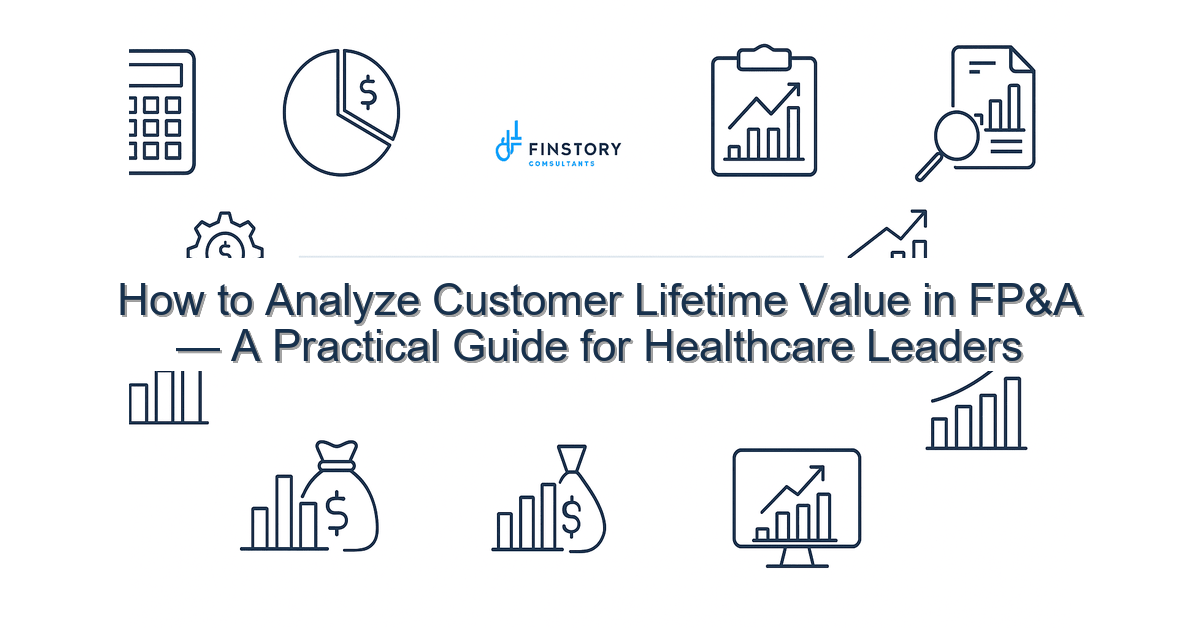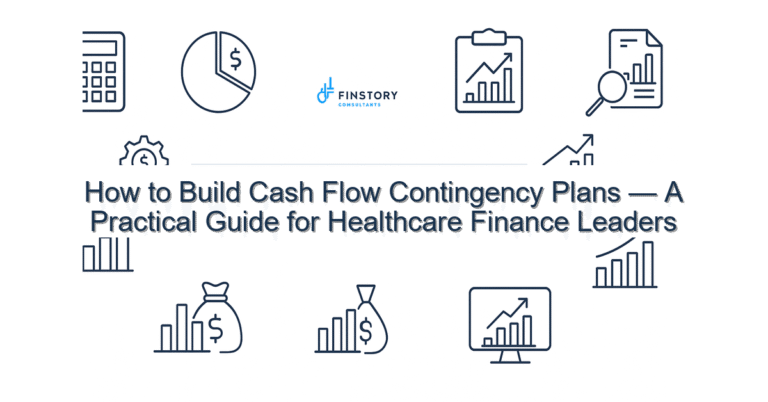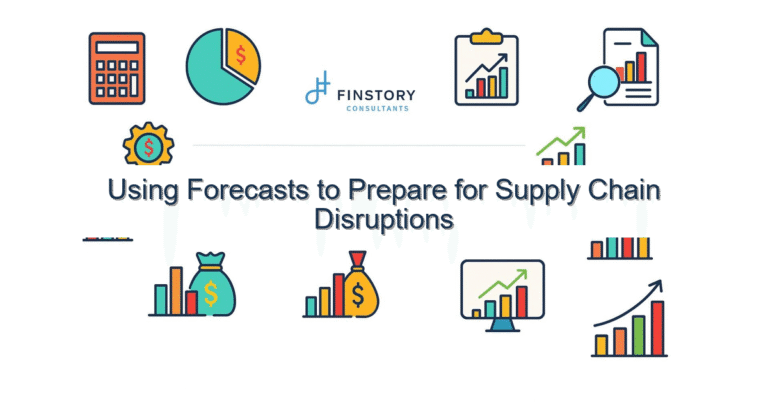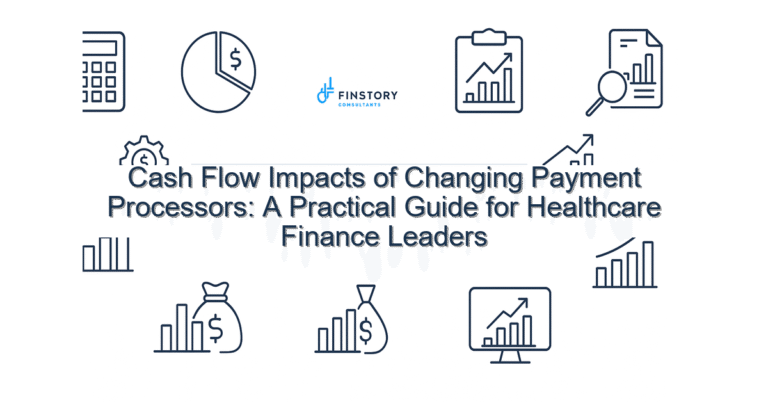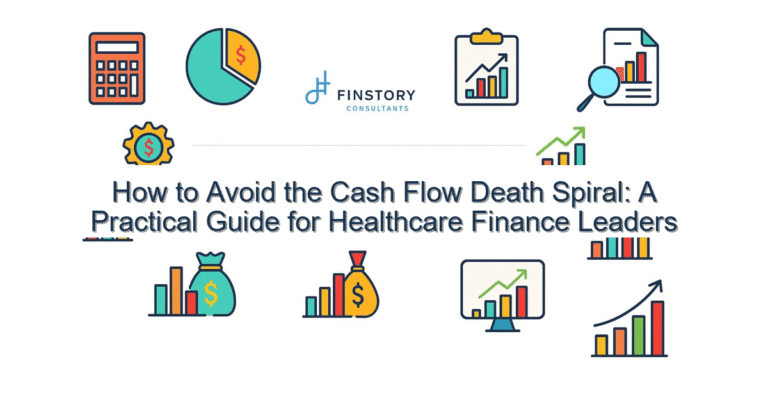How to Analyze Customer Lifetime Value in FP&A — A Practical Guide for Healthcare Leaders
Most finance teams in healthcare know revenue by encounter, not by relationship. That makes it hard to budget, prioritize programs, or decide which patient segments deserve more outreach. You’re not alone—this is a solvable gap.
Summary: Measure Customer Lifetime Value (CLV) to shift from transactional thinking to relationship economics. With a simple, repeatable CLV process you can prioritize programs, reallocate marketing and care-management spend, and forecast patient-driven revenue with greater confidence.
What’s the real problem?
Healthcare finance often treats patients like one-off transactions: bill, collect, repeat. That view misses the multi-year revenue and cost patterns driven by chronic care, referrals, and loyalty. Without CLV, teams guess at investments in care management, outreach, and service lines.
- Symptoms: Monthly revenue looks stable but margins fluctuate unpredictably.
- Symptoms: Investment committees argue about whether to fund a care-management program without clear payback timelines.
- Symptoms: Marketing and operations target everyone, not the segments that deliver the best lifetime margin.
What leaders get wrong
Leaders often assume CLV is too marketing-focused or irrelevant to clinical finance. Others build overly complex models that never get maintained. The respectful truth: both extremes waste time and money.
- Relying only on average revenue per encounter — ignores repeat behavior and cost-to-serve.
- Using single-year horizons — misses chronic care and referral value that accrue over multiple years.
- Not integrating cost data — revenue without associated cost gives misleading CLV.
- Over-engineering the model — if it takes months to produce, it won’t be used.
A better approach
Think of CLV as a decision tool, not an academic exercise. Use a pragmatic framework that balances accuracy with speed and repeatability.
- Step 1 — Define the cohort and horizon: pick a clear start (first appointment, first claim) and a 3–5 year horizon for chronic populations; 12–24 months may suffice for surgical services.
- Step 2 — Collect revenue and cost streams: claims, patient payments, ancillary services, readmission costs, and care-management spend tied to the cohort.
- Step 3 — Calculate retention and frequency: estimate visit/claim frequency and retention rates by year; survival analysis works well for chronic patients.
- Step 4 — Discount and aggregate: apply a conservative discount rate for multiyear forecasts and produce per-patient CLV and segment-level CLV.
- Step 5 — Validate and operationalize: test the model against historical cohorts, then fold outputs into forecasts, program business cases, and leader dashboards.
Real-world note: a mid-sized outpatient network I worked with found that diabetics in one region had a 3-year CLV 40% higher than corporate averages once you included ancillary lab and durable medical equipment revenues and subtracted targeted care-management costs. That insight shifted two FTEs from general outreach to targeted phone coaching—and improved retention by 8% in year one.
Quick implementation checklist
- Pick a pilot cohort (e.g., new diabetic patients in Q1 last year).
- Pull 3 years of revenue and claims data for that cohort.
- Map direct and indirect costs: care management, outreach, and per-visit variable costs.
- Estimate retention by year using observed patient returns or claims frequency.
- Choose a discount rate (3–7%) and apply to future-year cash flows.
- Calculate per-patient CLV and segment CLV.
- Create a short dashboard: CLV, cohort size, retention, and cost-to-acquire or cost-to-serve.
- Run a one-page sensitivity analysis (±10% retention, ±10% cost) to see impact.
- Share results with operations and marketing and agree on one action (e.g., targeted outreach pilot).
What success looks like
- Higher accuracy: CLV forecasts within ±10% of actuals over a 12–24 month period.
- Faster cycle time: reduce CLV report production from months to under 2 weeks.
- Improved ROI: reallocate spend to segments that increase margin on incremental spend by 20–50%.
- Better retention: measurable lift in cohort retention (e.g., +5–10% year-over-year).
- Operational impact: conversion of at least one pilot into routine program within 6 months.
Risks & how to manage them
- Risk: Data gaps or inconsistent identifiers lead to undercounting visits. Mitigation: Reconcile patient IDs across EMR, billing, and CRM; use deterministic matching first, then probabilistic if needed.
- Risk: Overstating CLV by ignoring cost-to-serve. Mitigation: Include both direct and attributable indirect costs (care management, follow-up calls, transportation support) in your model.
- Risk: Change management — operations ignore the outputs. Mitigation: Involve clinical and ops leaders early, build a one-page action plan tied to the CLV findings, and measure pilot outcomes jointly.
Tools & data
You don’t need exotic tools to start, but automation and good visuals accelerate adoption.
- Data sources: EMR, billing/claims, patient payments, care-management logs, CRM.
- Finance automation: Use ETL or finance automation tools to reconcile and refresh cohorts weekly instead of manually exporting CSVs.
- Visualization: Power BI or Tableau for leadership reporting. Build simple scorecards—CLV by segment, retention curves, and sensitivity sliders.
- Workflow: Export CLV outputs to budgeting and FP&A systems so forecasts update with a click.
Next steps
Start with one high-impact cohort and get a repeatable process in place. Aim for a minimum viable CLV model that informs one real decision—funding a pilot, shifting outreach, or repricing a service line. Measure, iterate, and then scale.
If you want help standing this up, Finstory can run a focused pilot, build the CLV model, and hand it to your FP&A and ops teams with dashboards and training.
Work with Finstory. If you want this done right—tailored to your operations—we’ll map the process, stand up the dashboards, and train your team. Let’s talk about your goals.
📞 Ready to take the next step?
Book a 20-min call with our experts and see how we can help your team move faster.
Prefer email or phone? Write to info@finstory.net
or call +91 44-45811170.
